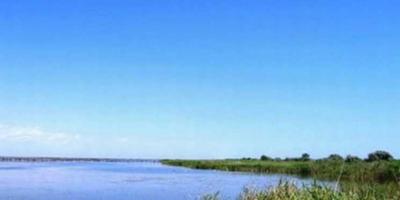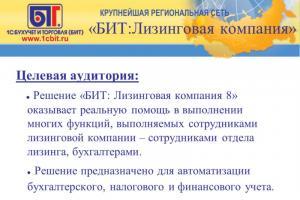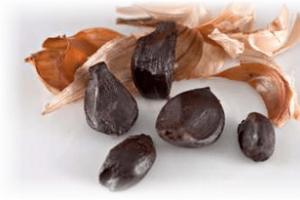Sturgeon (Acipenser) is the most valuable commercial fish. In total, there are 17 species of the sturgeon family, these include sterlet, thorn, stellate sturgeon, Amur, Russian, Siberian sturgeon and others. Some species are listed in the Red Book. The names of sturgeons directly depend on their habitats - the freshwater Amur sturgeon cannot live in the waters of the Caspian Sea, and the Siberian sturgeon never leaves the Yenisei and Irtysh.
You can buy live sturgeon from us - temporarily out of stock
The most important commercial value is the Russian sturgeon, which lives in the basins of the Black, Azov and Caspian seas, as well as in the river. Volga and its tributaries. This classic representative of bottom fish, which feels great at a depth of 100 meters, readily feeds on a variety of aquatic fauna (molluscs, larvae, small fish). The exception is the herbivorous paddlefish sturgeon, whose diet is based on phytoplankton. What the sturgeon definitely doesn’t like is sunlight Therefore, fish rarely rise to a depth of less than 1.5 m, and in the summer they “walk” exclusively at a depth of 2-3 meters.
Sturgeons grow rather slowly, this is due to the late maturity of individuals. Only after reaching 12 years of age does a female Russian sturgeon lay her first “portion” of caviar, but the number of eggs during spawning can reach 1 million. An adult sturgeon sometimes reaches 3 m in length, and weight ranges from 20 to 200 kg (Baltic species). In our company you can buy live fish - healthy and tasty.
Royal fish soup
 The white meat of sturgeon is quite dense, with layers of fat, but the taste is tender. The meat contains up to 12% fat and 19% protein, and sturgeon caviar is superior in calorie content to many animal products (beef, milk, etc.). Sturgeon are sold live, frozen or chilled, but salting sturgeon is not recommended - salting sharply deteriorates the taste.
The white meat of sturgeon is quite dense, with layers of fat, but the taste is tender. The meat contains up to 12% fat and 19% protein, and sturgeon caviar is superior in calorie content to many animal products (beef, milk, etc.). Sturgeon are sold live, frozen or chilled, but salting sturgeon is not recommended - salting sharply deteriorates the taste.
Sturgeon itself is so tasty that it is almost impossible to spoil this fish by cooking it. Sturgeon fish produces an unusually tasty bishop's fish soup and aspic worthy of a royal table. Rockefeller is said to have loved grilled sturgeon.
- Sturgeon for good luck. When catching sturgeon, the Khanty threw the heart of the fish, like a pebble, back into the water - the number of times it bounced, the number of fish that would be included in the next catch. And according to Ugric legend, during the ancient flood only those Ugrians were saved whose raft was made of sturgeon skin and bones.
- Three meters, three centners. In size, the sturgeon can only be inferior to its closest “relative” - the beluga. So, in 1904, a North Sea artel caught an individual 3.45 m in length and weighing 320 kg. Much earlier, in 1951, a Baltic sturgeon was caught in the Neva, which yielded 80 kg of caviar (the fish itself weighed 213 kg).
- Caviar is worth its weight in gold. On average, sturgeon lives about 40-60 years, and the value of caviar increases every year. The rarest is the golden imperial caviar. Such caviar is produced by individuals that live to be 80 years old. And the most expensive is white sturgeon caviar; no more than 10 kg of it is received per year. The price for 1 kg reaches 25 thousand dollars
Family: Acipenseridae (sturgeons)

Order: Acipenseriformes (sturgeons)

Subclass
: Ray-finned fish

Class
: Bony fish

International name
: Siberian sturgeon
Maximum size and age of sturgeon:
length up to 2 m, weight – up to 200 kg, age – up to 60 years.
Sturgeon distribution:
inhabits the rivers of Siberia from the Ob to the Kolyma. Single individuals are found in the lower reaches of the Pechora. An anadromous fish that forms a residential form that does not go out to sea in some large lakes of Siberia (Baikal, Zaisan). It is divided into two geographical races - eastern and western. Sturgeon from the Yenisei occupy an intermediate position between these forms.

Siberian sturgeon grows slowly. It feeds on crustaceans (amphipods), insect larvae (caddis flies, chironomids), mollusks, and fish. It becomes sexually mature at 11-18 years of age, depending on gender and habitat. The Siberian sturgeon forms a cross with the Siberian sterlet, the so-called koster
The Siberian sturgeon is more cold-loving than other sturgeon species. Ichthyologists tried to acclimatize it to fresh waters Leningrad region. Thousands of Siberian sturgeon fry were released into Lake Ladoga and the desalinated part of the Gulf of Finland. It is still too early to talk about the results of the introduction and acclimatization of the Siberian sturgeon in our waters, but grown-up sturgeons of this species occasionally end up in fishermen’s nets in the Gulf of Finland and Ladoga; There were also reports in Finnish newspapers about the capture of individual specimens of Siberian sturgeon of different ages off the coast of Finland.





Sturgeon is a large fish and forms a genus that includes 19 species. Habitat: Europe, northern part temperate zone Asia, North American continent.
Some species of sturgeon live in the seas, and spend the winter and spawning period in rivers. The remaining representatives of the genus live in lakes, preferring fresh water. They also go to rivers to spawn. Sturgeons lead a bottom-dwelling lifestyle. These fish are extremely prolific and can lay several million eggs at a time. Before spawning, the weight of the eggs takes up a quarter of the fish’s body weight.
Sturgeon caviar is a delicacy for people, so due to massive poaching, some species have almost become extinct. The largest sturgeon population in this moment lives in the Caspian Sea.
Appearance of sturgeon
The body shape of these fish is elongated, reminiscent of a spindle. The dorsal fin, as well as the anal fin, are located close to the tail. There are antennae on the fish's face.
There are no scales, they are replaced by bone strips called “bugs”. Between them are small bone plates. Bone stripes go from head to tail, one is on the back, two are on the sides. Two more longitudinal plates are located on the belly. Near the tail they are not connected to each other. Depending on the habitat and species, the sturgeon has different colors. Basically, these fish have a dark back, light brown sides and a white or gray belly.
Sturgeon sizes
The largest representatives of the genus are the white sturgeon and the Atlantic sturgeon. White sturgeon is found on the western coast of the North American continent, from Alaska to California. The second name of this species is “California beluga”. The sturgeon received this name due to its enormous size. The largest white sturgeon was caught off the coast of Canada. It weighed 499 kg and was 6.1 meters long.

The Atlantic sturgeon is an inhabitant of the North, Baltic and Mediterranean seas. Previously, it could be found in the White and Black Seas, near the mouths of various rivers. Today this species is on the verge of complete destruction, and is therefore listed in the Red Book. These fish reach 6 meters in length and weigh up to 400 kg. One fish weighing 200 kg produces caviar weighing up to 80 kg.
Siberian sturgeon is an exclusively Russian fish. Its habitat is the territory from the Ob to Indigirka. Its length can be up to 2 meters. An adult weighs on average 65 kg. The largest recorded weight of this fish was 210 kg.
The Russian sturgeon is indigenous to the Black, Azov and Caspian seas. Also found in rivers such as the Kama, Danube, Dnieper, Don, Volga, Kuban. It has distinctive feature– he has a rounded short muzzle. Weight Limit sturgeon is 115 kg. It can grow up to 2.35 meters in length. This fish grows very slowly, so it is almost impossible to catch an individual with such parameters; usually the catch consists of young individuals whose weight reaches 15-20 kg.

The Amur sturgeon is a resident of the Amur, Shilka, Argun and Ussuri rivers. Typically, an adult reaches 1.5 meters in length and weighs 4-10 kg. The maximum recorded weight was 60 kg. Some fishermen claim to have caught sturgeon weighing up to 160 kg, but there is no evidence of this.
Lake sturgeon lives in North America. It can be found in the Mississippi and St. Lawrence rivers, as well as in the Great Lakes. The maximum weight of the fish is 190 kg with a maximum length of 3 meters. To reach such dimensions, a fish must live for many years. Usually these fish are caught young, so their parameters are much smaller.

Nutrition
Nematodes are mainly consumed as food ( roundworms), shellfish and fish. For fish, preference is given to anchovy, gobies and sprat. They are looking for their prey at the bottom. The depth can be from 2 to 100 meters. Young animals usually do not dive more than 5 meters into the water.
Reproduction and lifespan
Sturgeons become sexually mature at an age exceeding 10 and sometimes 20 years. Spawning takes place in rivers. To spawn different types go to different time, during the period from March to November. Largest quantity Spawning fish are observed in July. Fish that spawn near the end of the year remain in the same rivers for the winter. Sturgeons lay their eggs on the bottom covered with stones or gravel. In this case, the depth should be 4-20 meters. They lay eggs exclusively in running water.
 Sturgeon caviar is an expensive and valuable delicacy.
Sturgeon caviar is an expensive and valuable delicacy. A week later, the eggs hatch into fry, which are carried away from the spawning grounds by the current. The fry easily adapt to aquatic conditions. At first, the diet is based on plankton. Then the grown fry eat larger animals. These fish do not spawn annually. Sturgeons are long-lived fish; they can live more than 100 years.
Most of us know almost nothing about fish. There are a ton of standard river fish that we've all caught and shown off in photos. There is a little more exotic salmon, somewhere far away there are huge whales or dangerous sharks.
Sturgeon fish stand a little apart from all this. Sturgeon are one of the most ancient species on Earth, about two hundred million years old. These beauties appeared on the planet even before dinosaurs and hairy monkeys, who later became bald and invented the wheel, the Internet and sunscreen. It is possible that they would have outlived us all if not for human love for black caviar.
There are about seventeen in total various types sturgeon, of which I would single out four main ones: sturgeon, sterlet, stellate sturgeon and beluga (the one that supposedly roars loudly, but in reality does not).
Sturgeon looks something like this:
In natural conditions (of which there are almost none left) it lives for about fifty years. He is picky in breeding, like the panda from this comic.
So, on fish farms (I’m getting a little ahead of myself here) there are three males per female. And if she doesn’t like anyone, then she refuses to mate and procreation does not occur.
This is Beluga.

With her grin, she is a little reminiscent of a sea dinosaur, unlike which she wisely stayed in the water and did not get hit by a giant asteroid or awakened volcanoes.
This is the largest freshwater fish. Beluga weighed up to one and a half tons and reached a length of 4–5 meters.
For example, this is what a stuffed beluga looks like in the Tatarstan museum. Previously, they lived 120 years (almost twice as long as the average Russian).

And this is what the beauty looks like, which was caught in the thirties and sent as a gift to Stalin.

According to legend, a dozen more smaller fish were found in her stomach. But in reality, everything is bad with Beluga. It is on the verge of extinction, and will most likely be completely destroyed in the next twenty years.
Most of the sturgeon fish are found in the Caspian Sea; sturgeon also swims in Siberian rivers and on the Amur. Some species are found in small quantities in German rivers and America. But the lion's share is the Caspian Sea and the rivers flowing into it.
Pike, sturgeon, beluga (Huso huso), coral salmon grouper (Plectropomus pessuliferus), giant grouper (Epinephelus lanceolatus), North Atlantic lobster (Homarus americanus), etc. are often mentioned in the literature as having negligible aging.
In 1990, a beluga weighing about a ton was caught in the Astrakhan fisheries. She had a “height” of 4 meters 26 centimeters. There was about a hundredweight of caviar in it. Ichthyologists determined the age of the giant fish - about 70 years. She belonged to the generation of the “pre-dam” herd of red fish, which used to freely go to spawn along the Volga to the Belaya River. Perhaps this is the last huge beluga in the Volga waters. Experienced specialists made her stuffed for the museum.

In general, the fate of sturgeon can be divided into two periods: before and after the recognition of black caviar as an exquisite delicacy. Just four hundred years ago in Europe, sturgeon were considered ordinary fish, and caviar was something like tripe, which was given to feed pigs.
But there was an enterprising guy named Marcus do Vogelaar, a Dutch merchant who moved to Moscow in 1589 and began transporting caviar to Europe. We can say that it was thanks to him that black caviar became an exquisite delicacy for the European nobility.

Around this moment, the sturgeon began to have problems. The Dutch competed for the right to sell caviar with the British and made +30–40% profit on it annually, without registration and SMS.
Soon, the next Russian tsar introduced a monopoly on the production of caviar, which then produced about 150 tons per year. And all the money from the sale began to go to the treasury. For the next 400 years, caviar was mined on an even more industrial scale, and was still transported to Europe.
Together with the Russians, the Persians, who controlled about 10% of the Caspian coast, were also engaged in the caviar trade. They only had a short respite after the Islamic revolution in 1978. Caviar is considered haram and its extraction was immediately banned. But then they took out a calculator and decided that paying such money for such money is not so haram, and it’s still possible to sell caviar to kafirs.
The trick of caviar is that it is scarce, it is expensive and therefore shows the status of the nobility well. Accordingly, people with money are willing to pay just to highlight their lifestyle. In our country, black caviar costs 40–80,000 rubles per kilo (depending on the place of purchase); abroad it is several times more expensive.

This picture shows the atmosphere that accompanies caviar in social life: evening, pleasant company, an admiring girl and an environment in which everything is fine for everyone, and will continue to be fine until the end of a calm and well-fed life.
If you are interested in reading about the history of caviar in more detail, there is a cool book "Caviar: A history of desire - by Peter G. Rebeiz"
https://www.caviarhouse–prunier.com/caviar–––a–history–of–desire–––by–peter–g––rebeiz–
There are errors in describing the history of caviar in Russia, but its consumption in Europe and the history of the emergence of fish farms are well described (more on this a little later).
This is a small but quite truthful window into the world of caviar consumption.
But besides the world of caviar consumption, there is also the natural world, where caviar is obtained from live fish. By the second half of the twentieth century, the sturgeon population had declined so much that fishing quotas had to be introduced. In 1989, the USSR produced 1,366 tons of black caviar. After the collapse of the USSR, the Caspian coast came under the control of five different countries, each of which had its own interests.

As a result, official production has sharply decreased, everything has become more difficult to control, and poaching has increased significantly.
Today, most sturgeon are in the Red Book and are endangered. This happened for several reasons: uncontrolled fishing for decades, poachers (more than 80% Russian market- poacher's caviar), rivers blocked by dams and the water of these rivers and seas polluted with waste, fertilizers and oil.

Only 1% of sturgeon fry survive to the age of five; truly large fish are extremely rare. For 5 years now, scientists have not observed the spawning of beluga on the Volga. Although theoretically, perhaps a very old beluga is still swimming somewhere in the Caspian Sea. She was born under the Tsar and survived all our revolutions in the depths of the sea. And over all these years she managed not to get caught by fishermen. At least I want to believe in its existence.
But the general conclusion is sad: most likely, these ancient fish will soon become completely extinct.
In principle, the population also has a chance of salvation. In the seventies, the first aquacultures appeared in which sturgeon are bred for meat and caviar. It's something like a farm, but they raise fish there.
On the one hand, it’s lousy that fish are raised simply to kill them. But in Moscow alone today up to 100 kilos of poached black caviar are sold daily.
And if, in the end, farmed caviar turns out to be cheaper than poached caviar, then the fish in nature have a small chance of survival. I don’t really believe in the moral qualities of people, but I believe that money can defeat evil. This is the only thing the sturgeon can hope for in this whole story.
Legally, the situation is as follows: we can sell black caviar grown on farms, but not caviar caught in rivers and seas. For example, this is what a fish farm in North Carolina looks like.

It would seem, why in Russia few people are engaged in this business? After all, the cost is not very high, and you can sell it abroad and in foreign currency. The problem is that the fish begin to reproduce and produce eggs only after 7+ years of growth. But for business planning in Russian realities, this is too distant a horizon.
Nevertheless, we also have farms, and I am in the business of selling their black caviar ( most I’ve been looking for contacts abroad where I can sell caviar for several times more expensive).
Beluga is not only the largest of the sturgeons, but also the most big fish of those caught in fresh waters. There are known cases where specimens up to 9 meters long and weighing up to 2000 kg were encountered. Today, individuals weighing more than 200 kg are rarely found; transitions to spawning have become too dangerous
In “Research on the State of Fisheries in Russia,” in 1861, it was reported about a beluga caught in 1827 in the lower reaches of the Volga, which weighed 1.5 tons.
On May 11, 1922, in the Caspian Sea, near the mouth of the Volga, a female weighing 1224 kilograms was caught, with 667 kilograms on her body, 288 kilograms on her head, and 146.5 kilograms on her eggs (see photo). Once again, a female of the same size was caught in 1924 in the Caspian Sea in the area of Biryuchya Spit; her eggs contained 246 kilograms, and the total number of eggs was about 7.7 million.
A little to the east, before the mouth of the Urals, on May 3, 1926, a 75-year-old female weighing more than 1 ton and 4.24 meters long was caught, containing 190 kilograms of caviar. The National Museum of the Republic of Tatarstan in Kazan displays a stuffed beluga 4.17 meters long, caught in the lower reaches of the Volga at the beginning of the 20th century. Its weight when caught was about 1000 kilograms, the age of the fish was 60–70 years.
In October 1891, when the wind drove away water from the Taganrog Bay of the Sea of Azov, a peasant passing by the exposed shore discovered a beluga in one of the puddles, pulling 20 pounds (327 kg), of which 3 pounds (49 kg) were caviar.

But Kaluga - Huso dauricus. Queen of Cupid.









